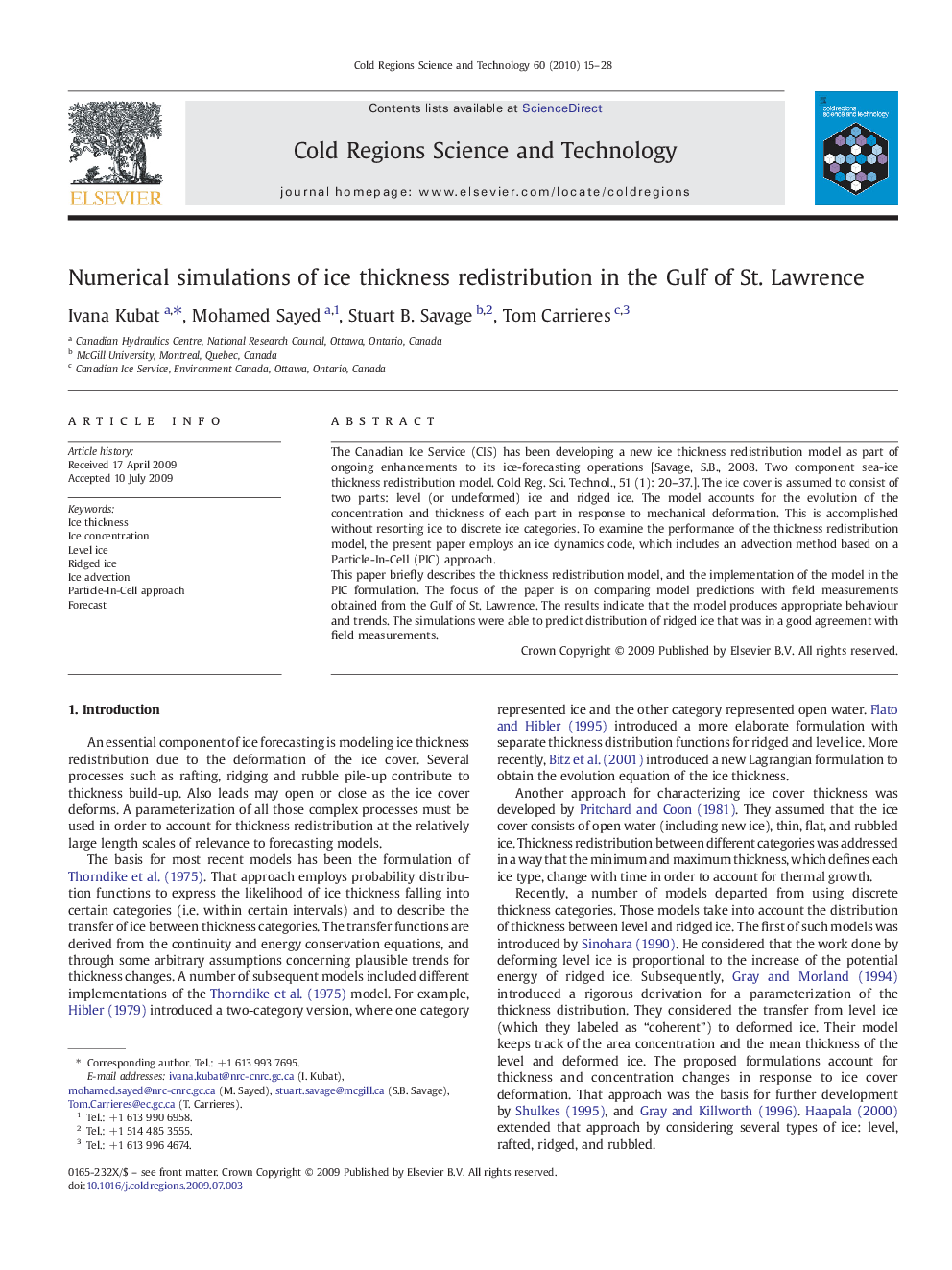| Article ID | Journal | Published Year | Pages | File Type |
|---|---|---|---|---|
| 4676373 | Cold Regions Science and Technology | 2010 | 14 Pages |
The Canadian Ice Service (CIS) has been developing a new ice thickness redistribution model as part of ongoing enhancements to its ice-forecasting operations [Savage, S.B., 2008. Two component sea-ice thickness redistribution model. Cold Reg. Sci. Technol., 51 (1): 20–37.]. The ice cover is assumed to consist of two parts: level (or undeformed) ice and ridged ice. The model accounts for the evolution of the concentration and thickness of each part in response to mechanical deformation. This is accomplished without resorting ice to discrete ice categories. To examine the performance of the thickness redistribution model, the present paper employs an ice dynamics code, which includes an advection method based on a Particle-In-Cell (PIC) approach.This paper briefly describes the thickness redistribution model, and the implementation of the model in the PIC formulation. The focus of the paper is on comparing model predictions with field measurements obtained from the Gulf of St. Lawrence. The results indicate that the model produces appropriate behaviour and trends. The simulations were able to predict distribution of ridged ice that was in a good agreement with field measurements.
